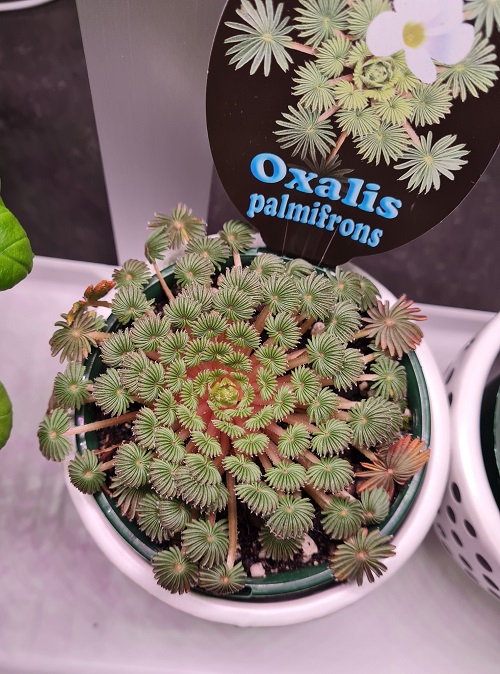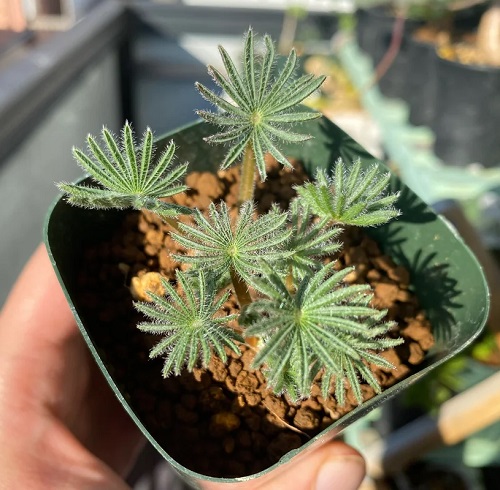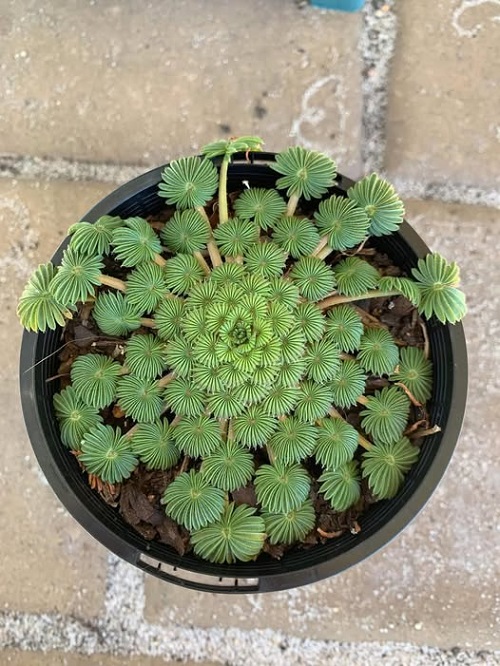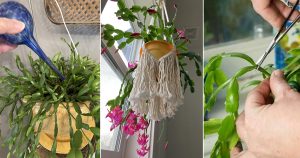Oxalis palmifrons is a unique and low-maintenance plant with palm-like leaves. Learn how to take care of it and see it bloom beautifully.

Oxalis palmifrons is a unique and beautiful plant native to South Africa. With its palm-like leaves and vibrant flowers, it’s a growingly popular choice for plant parents. Give this a read and get one for yourself now!
Oxalis palmifrons Key Facts Table
| Scientific Name | Oxalis palmifrons (Salter) |
| Common Name | Palm Leaf Oxalis or False Shamrock Plant |
| Sunlight | Full sunlight |
| Soil | Sandy and Acidic |
| Spread | It will self-propagate |
| Growth | Maximum growth diameter will be up to two feet |
| Flowering | Blooms in spring with white, pink, or yellow flowers. |
| Pruning | After blooming, use sharp scissors or a tool to cut off dead blooms and leaves. |
| Repotting and Propagating | Sends off shoots that can be repotted or split the plant. |
| Poison | It is not known to be toxic to pets or humans. However, keep it out of reach of small children and pets to prevent any accidental ingestion. |
Oxalis palmifrons Information
Palm leaf false shamrock plant (simply, false shamrock) or your infamous Oxalis palmifrons, is an adorable and perennially blooming beauty. Oxalis is the genus name of a plant that is native to South Africa and is made up of over 200 species, Oxalis palmifrons is one of the species.
The name comes from its leaves, which are like tiny, symmetrical tendrils flowing from the top of each stem, resembling a small cluster of miniature palm trees.
Propagating Oxalis palmifrons

Starting with propagating your Oxalis palmifrons? Split the plant into smaller pieces first. You can also try repotting an offshoot without damaging the parent plant. Alternatively, try propagating through any seeds from your Oxalis if you have.
In either of the techniques, make sure you use a freshly propagated section that comes out of direct sunlight until it begins to grow new leaves. Let the plant heal any open wounds; otherwise, the sunlight can kill the plant.
Oxalis palmifrons Requirements

Light
Oxalis palmifrons will love a sunny windowsill since it likes bright, direct sunlight. Although, intense afternoon sunlight can scorch the leaves. Too little light can cause the stems to stretch and the leaves to lose their magnificent color.
Soil
The soil for your Oxalis palmifrons should always remain loose. Choose a well-draining loam soil that includes sand and organic matter to help in drainage. Avoid heavy clay soils that retain too much moisture, as this can lead to root rot. Keep it slightly wet, and water only from the bottom through the bottom watering technique.
You can also mix in a handful of perlite to keep the soil airy and prevent compaction over time.
Watering
During its active winter growth period, water the plant weekly, allowing the soil to dry entirely between waterings. Be careful since soggy soil can lead to root rot. The bottom watering method, with a mixture of loose soil and rocks, enables the water to travel up as much as it can, ensuring you neither overwater nor underwater it.
In summer dormancy, reduce watering drastically—just a light sprinkle every few weeks is enough.
Temperature and Humidity
Oxalis palmifrons thrives in temperatures between 15°C and 25°C with humidity around 50%. It tolerates lower temperatures but may require misting in high humidity or low humidity conditions to prevent wilting.
Oxalis palmifrons Care

Fertilizer
If the bulb is in its summer dormant stage, then don’t feed the plant. The bulbs need to rest in order to continue growing. When it isn’t dormant, feed it monthly with a balanced fertilizer at half the strength, maybe 5-10-10. Apply the fertilizer every 4-6 weeks to support healthy growth.
Pruning
Pruning is generally not required for Oxalis palmifrons. However, you can remove any dead or yellowing leaves to keep the plant looking neat and healthy. Use clean, sharp scissors or pruning shears to avoid damaging the plant.
If the plant looks tired after blooming, a light trim encourages fresh, compact growth for the next season.
Dormancy Tip
Oxalis palmifrons naturally goes dormant in summer. Don’t worry if the leaves die back—it’s not dying, just resting. Reduce watering, keep the pot in a cool, shaded place, and wait for new growth to appear when cooler weather returns.
Oxalis palmifrons is a stunning and low-maintenance plant perfect for your house if you love exotic beauties. With proper care and attention, it’ll thrive and bring beauty to your space. Let us know how your planting journey has been with them in the comments below.







